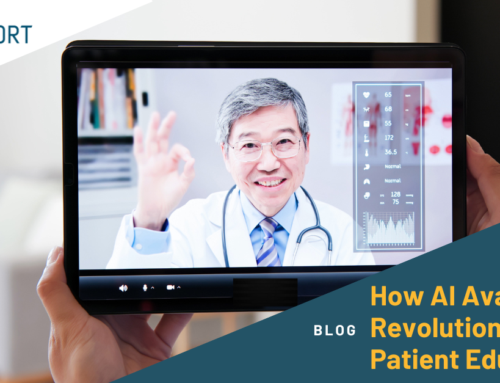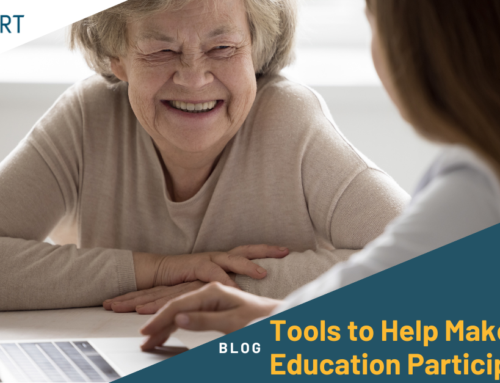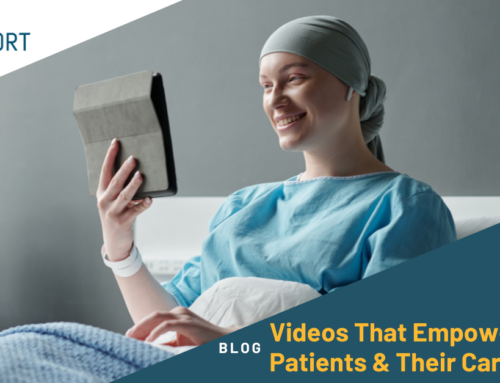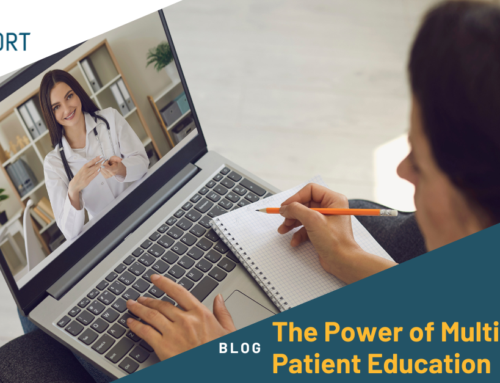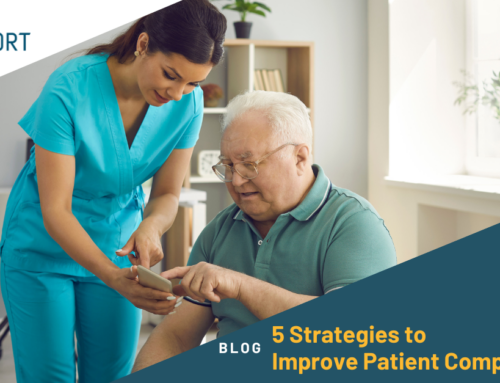The Power of Multilingual Video: Educating Every Patient, Everywhere
Good healthcare starts with good communication. But what happens when patients don’t speak the same language as their doctor? Or when they don’t understand medical instructions?
In the U.S. alone, over 25 million people have limited English skills, according to the U.S. Census Bureau. That means millions of patients may not fully understand their diagnosis, treatment, or how to care for themselves at home.
Multilingual multimedia—like multilingual video, voiceovers, and visual tools in different languages—can help fix this. 
Why language matters in healthcare.
When patients don’t understand medical information, it puts their health at risk. Research shows that people with limited English are more likely to be readmitted to the hospital and less likely to follow care instructions after surgery or a doctor visit. (AHRQ)
But language is just one part of the story. Cultural understanding matters, too.
It’s not just about translation…
Many people think patient education in other languages just means translating English scripts. But good patient education goes further. It needs to feel familiar and respectful to the patient’s culture.
That means:
- Using simple words that match the patient’s reading level
- Choosing images and examples that make sense in their daily life
- Making sure the tone of the message matches their values (formal vs. informal, direct vs. soft-spoken)
Real-life success stories:
Across the world, healthcare systems are using multilingual multimedia to improve care:
- Canada: Toronto’s University Health Network created a library of multilingual video content in over 20 languages to help newcomer patients understand treatments. The videos use culturally relevant examples and simple language.
- Australia: Health Translations, a state-funded resource, offers health factsheets and videos in 100+ languages. These cover topics like COVID-19, diabetes, and mental health.
- UK: The NHS offers patient education in languages like Urdu, Somali, Bengali, and Polish—helping patients better understand asthma, prenatal care, and more.
These efforts help build trust, reduce confusion, and improve care.
Creating multilingual multimedia at scale: easier said than done.
Of course, creating multilingual video content that is culturally sensitive sounds good on paper—but doing it well, and doing it at scale, is a real challenge. Language is deeply personal. Culture is nuanced. And healthcare content carries serious weight.
So, how DO teams tackle quality and quantity? With artificial intelligence.
AI is transforming how healthcare teams create video content—especially when it comes to reaching diverse populations. Today’s AI tools can generate human-like voiceovers, animate digital avatars, and even translate nuanced medical information into over 80 languages. Advanced models can adapt tone, accent, and reading level to match a patient’s cultural context and comprehension ability.
Instead of spending weeks coordinating scripts, translators, and production, teams can now produce a personalized multilingual video in hours. These AI-powered videos not only support greater inclusivity, but also enable faster patient onboarding, improved understanding, and lower dropout rates in clinical trials.
Of course, some healthcare professionals remain cautious about relying on AI for such sensitive content. Can it understand cultural details? Will it miss important cues? Could it sound robotic or even get things wrong?
These are valid concerns. But the writing is on the wall: AI is here to stay. And when used carefully and responsibly, AI can help healthcare teams create multilingual video content faster, more affordably, and at a larger scale.
How 5thPort helps:
At 5thPort, we make it easy for healthcare teams to create and deliver high-quality, multilingual video patient education—without the usual time and cost barriers, and without over burdening your resources.
- We use AI-powered video avatars to create multilingual video at scale in multiple languages. These avatars are built using your own image, voice, and tone, delivering information in a way that feels familiar and trustworthy. They speak clearly and naturally, helping patients connect with the message.
- Add voiceovers and subtitles to make content even more accessible.
- Use interactive tools and quizzes to check patient understanding and confidence—so you know what’s working.
- Customize each multilingual video or experience to match both language and culture, making every message feel personal and respectful.
- Track engagement and comprehension, so your team can improve content over time.
Whether you need 5 videos or 500, 5thPort makes it possible—without sacrificing quality, clarity, or compassion.
Additionally, this helps reduce pressure on clinical staff and makes every patient feel seen, respected, and informed.
Final thoughts: every patient deserves to understand.
Everyone deserves to understand issues pertaining to their health, no matter what language they speak. Multilingual videoa isn’t just helpful—it’s essential. And while it’s not always easy to get right, it’s far easier with the right tools.
With platforms like 5thPort—and the smart use of AI—it’s possible to deliver education that speaks to everyone.
Let’s break the language barrier. Let’s educate with empathy.
To schedule a demo or receive more information email us at Info@5thPort.Com or fill in our contact form.
This article is part of a series by 5thPort exploring the transformative potential of video-based multimedia in healthcare. Stay tuned for part #6.
